Addition of algae improved the growth and survival
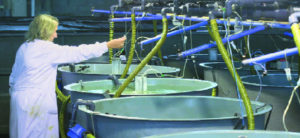
In recent years, research on the culture of Senegal sole (Solea senegalensis) has focused on optimizing production and promoting culture in geographic areas outside their native range. Larval rearing is regularly carried out using a range of initial feeding protocols.
Larval feeding study
The authors recently conducted a study to compare four initial feeding regimes to improve the growth, survival, and quality of Senegal sole larvae. Larvae were reared at 19 degrees-C in eight circular, 280-liter tanks at a density of 50 larvae per liter. Diet A included (Chlorella sp.) algae at 300,000 cells per ml in tank and 20 (Brachionus plicatilis) rotifers per ml enriched with (Isochrysis galbana). Diet B was artemia nauplii at 1.4 per ml, while diet C was comprised of artemia nauplii at 2.9 nauplii per ml. Diet D was artemia nauplii at 4.3 per ml.
The diet B regime was calculated based on the dry weight of rotifers, with diets C and D initially two and three times that of diet B and increasing afterwards based on larvae demand. From eight days after hatching on, the A regime larvae were fed only commercial enriched artemia.
Results
Similar growth rates for dry weight and length were found with the four diets. Partial growth rates and final survival are shown in Table 1. At 47 percent, the A diet regime had the highest survival rate.
Chereguini, Partial growth rates and final survival of sole larvae, Table 1
| Diet A | Diet B | Diet C | Diet D |
|---|
Diet A | Diet B | Diet C | Diet D | |
|---|---|---|---|---|
| 0-8 days after hatch | 20.21 | 21.68 | 19.17 | 20.64 |
| 8-13 days after hatch | 24.92 | 25.92 | 26.00 | 23.48 |
| 13-27 days after hatch | 14.21 | 9.88 | 11.55 | 12.18 |
| 27-36 days after hatch | 7.94 | 15.05 | 18.20 | 13.17 |
| Survival (%) | 47.01 | 27.75 | 21.88 | 19.95 |
Similar protein content at eight and 39 days after hatch (38.5 percent and 43.5 percent dry weight, respectively) and similar lipid content eight days after hatch (26.5 percent) were found for the test diets. However, significant differences at 39 days after hatching were obtained among the larvae fed regime A (19.5 percent) and the B, C, and D regimes (25 percent).
Results for total lipids composition of the larvae are shown in Tables 2 and 3. Sum (omega-3)/sum (omega-6) levels were higher for the A regime eight days after hatch, but similar to the other regimes after 39 days. The 22:6 omega-3 DHA content was higher in larvae fed the A regime (10 percent of total fatty acid) when compared to the other regimes (4.5 percent of total fatty acid). DHA/EPA was also higher for the A regime at both eight and 39 days after hatching.
Chereguini, Lipid composition of sole larvae at eight days after hatch, Table 2
| Lipid | Lipid Composition (% total) A | Lipid Composition (% total) A | Lipid Composition (% total) B | Lipid Composition (% total) B | Lipid Composition (% total) C | Lipid Composition (% total) C | Lipid Composition (% total) D | Lipid Composition (% total) D |
|---|
Lipid | Lipid Composition (% total) A | Lipid Composition (% total) A | Lipid Composition (% total) B | Lipid Composition (% total) B | Lipid Composition (% total) C | Lipid Composition (% total) C | Lipid Composition (% total) D | Lipid Composition (% total) D |
|---|---|---|---|---|---|---|---|---|
| PUFAs | 33.87 | 28.67 | 39.41 | 40.90 | 40.70 | 28.37 | 26.26 | 26.24 |
| Saturated | 20.33 | 20.79 | 22.03 | 20.43 | 21.83 | 20.90 | 22.92 | 22.73 |
| Monounsaturated | 45.80 | 50.54 | 38.57 | 38.67 | 37.92 | 50.73 | 50.82 | 51.03 |
| Sum (n-3) | 24.83 | 20.72 | 17.64 | 19.14 | 18.83 | 19.24 | 17.51 | 17.50 |
| Sum (n-6) | 8.05 | 7.03 | 7.90 | 8.51 | 8.40 | 8.49 | 7.94 | 8.05 |
| (n-3)/(n-6) | 3.08 | 2.95 | 2.23 | 2.25 | 2.24 | 2.27 | 2.21 | 2.17 |
| 20:5 (n-3) | 9.07 | 7.52 | 9.03 | 9.74 | 9.19 | 9.89 | 9.40 | 9.03 |
| 22:6 (n-3) | 10.53 | 8.82 | 4.27 | 4.89 | 5.17 | 4.95 | 4.28 | 4.36 |
| 22:6 (n-3)/ 20:5 (n-3) | 1.16 | 1.17 | 0.47 | 0.50 | 0.56 | 0.50 | 0.46 | 0.48 |
Chereguini, Lipid composition of sole larvae at 39 days after hatch, Table 3
| Lipid | Lipid Composition (% total) A | Lipid Composition (% total) A | Lipid Composition (% total) B | Lipid Composition (% total) B | Lipid Composition (% total) C | Lipid Composition (% total) C | Lipid Composition (% total) D | Lipid Composition (% total) D |
|---|
Lipid | Lipid Composition (% total) A | Lipid Composition (% total) A | Lipid Composition (% total) B | Lipid Composition (% total) B | Lipid Composition (% total) C | Lipid Composition (% total) C | Lipid Composition (% total) D | Lipid Composition (% total) D |
|---|---|---|---|---|---|---|---|---|
| PUFAs | 39.14 | 38.99 | 39.37 | 39.25 | 40.80 | 39.61 | 39.70 | 40.39 |
| Saturated | 26.42 | 25.95 | 23.91 | 23.66 | 23.21 | 24.76 | 24.08 | 23.61 |
| Monounsaturated | 34.35 | 36.06 | 36.72 | 37.09 | 35.99 | 35.63 | 36.22 | 35.99 |
| Sum (n-3) | 30.63 | 30.54 | 31.12 | 31.00 | 31.92 | 30.92 | 31.01 | 31.80 |
| Sum (n-6) | 7.94 | 7.99 | 7.91 | 7.90 | 8.51 | 8.30 | 8.20 | 8.25 |
| (n-3)/(n-6) | 3.86 | 3.82 | 3.94 | 3.93 | 3.75 | 3.72 | 3.78 | 3.85 |
| 20:5 (n-3) | 3.28 | 3.34 | 3.35 | 3.34 | 3.75 | 3.34 | 3.44 | 3.40 |
| 22:6 (n-3) | 7.09 | 6.21 | 5.10 | 4.68 | 5.84 | 5.46 | 5.10 | 5.07 |
| 22:6 (n-3)/ 20:5 (n-3) | 2.16 | 1.86 | 1.52 | 1.40 | 1.56 | 1.63 | 1.48 | 1.49 |
Results similar to haddock, turbot, halibut
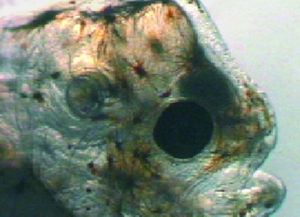
The higher survival rates in larvae fed the initial enriched rotifer diet agreed with data reported for haddock (Melanogrammus aeglefinus). Differences in partial growth rates at 13 to 27 and 27 to 36 days after hatching, and total lipid content at 39 days between the diet A and other regimes were likely related to the artemia supply.
These results are in agreement with research previously reported for turbot (Scophthalmus maximus) and halibut (Hippoglosus hippoglossus). The addition of algae improved the growth and survival of larvae by modifying bacterial flora in the water and stabilizing rotifer nutritional quality. Moreover, the lipid content and fatty acid composition of the larvae reflected the composition of the microalgae used, and so may be an effective tool to control fatty acid content.
(Editor’s Note: This article was originally published in the October 2005 print edition of the Global Aquaculture Advocate.)
Now that you've reached the end of the article ...
… please consider supporting GSA’s mission to advance responsible seafood practices through education, advocacy and third-party assurances. The Advocate aims to document the evolution of responsible seafood practices and share the expansive knowledge of our vast network of contributors.
By becoming a Global Seafood Alliance member, you’re ensuring that all of the pre-competitive work we do through member benefits, resources and events can continue. Individual membership costs just $50 a year.
Not a GSA member? Join us.
Authors
-
Olvido Chereguini
Spanish Institute of Oceanography
El Bocal Culture Centre
Bº Corbanera s/n Monte 39012
Santander, Cantabria, Spain -
Inés García de la Banda
Spanish Institute of Oceanography
El Bocal Culture Centre
Bº Corbanera s/n Monte 39012
Santander, Cantabria, Spain -
Jose Diez
Jacumar Project Fellowship
Spanish Institute of Oceanography
El Bocal Culture Centre
Bº Corbanera s/n Monte 39012
Santander, Cantabria, Spain -
Fátima Linares
Marine Investigation Centre
Xunta de Galicia
Pontevedra, Spain
Related Posts
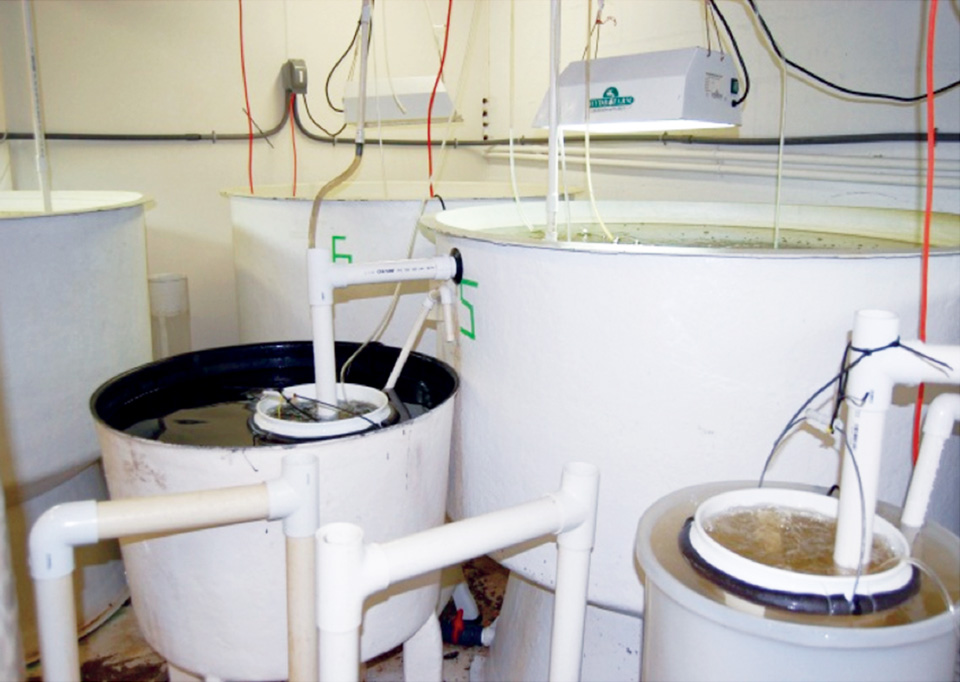
Health & Welfare
Advances in intensive copepod production technology
Research at the Oceanic Institute has been successful in overcoming bottlenecks associated with rearing small-mouthed fish larvae by finding a suitable first feed. Early work on the calanoid copepod Parvocalanus crassirostris focused on parameters necessary for successful maintenance of stock cultures.
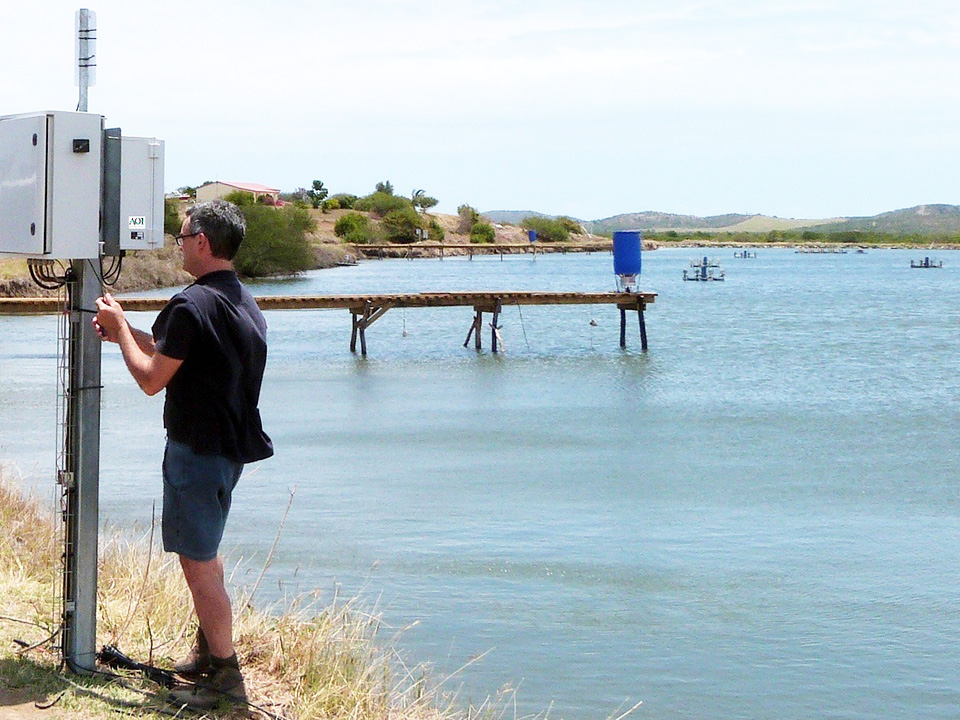
Innovation & Investment
Acoustic control improves feeding productivity at shrimp farms
In systems recently developed for shrimp farms, passive acoustic-based technology enables sensor-based control of multiple automatic feeders. Improved growth and feed conversion have been recorded at commercial farms using the technology.
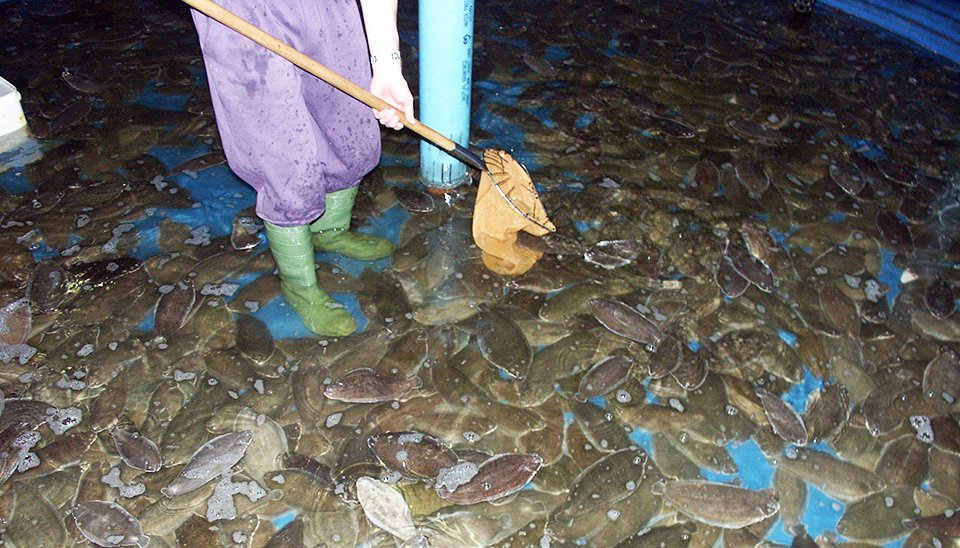
Intelligence
Sole show culture potential in Europe
Early efforts at sole culture in Europe were hampered by several technological and disease problems. Improvements in recirculation technology and advances in feed technology have renewed interest in the species.
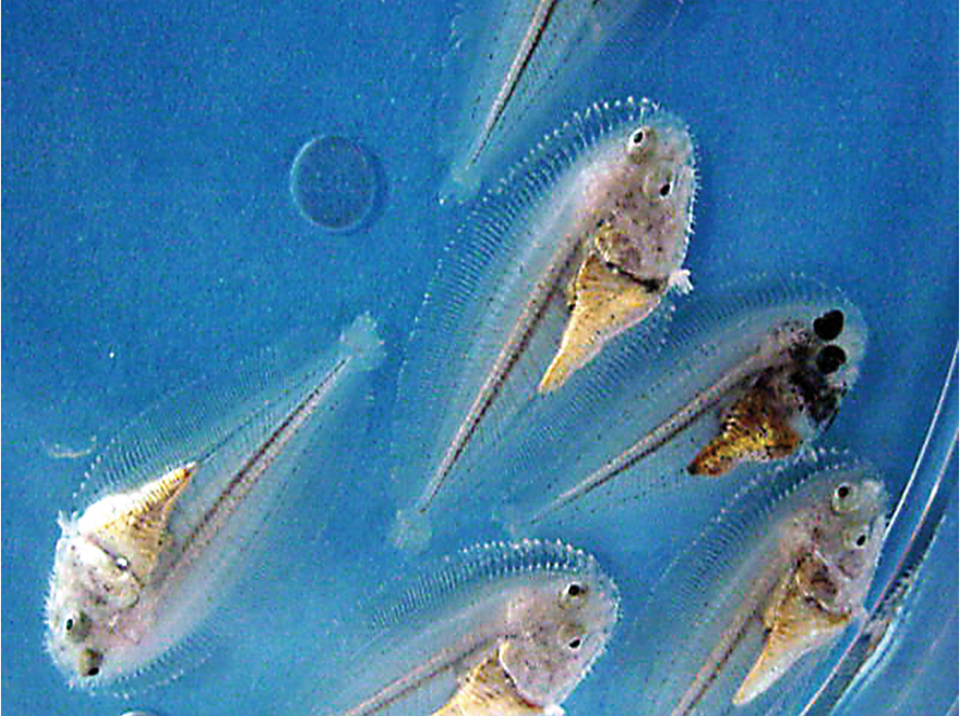
Health & Welfare
PUFAs affect growth, pigmentation in Senegal sole larvae
Inadequate levels of omega-3s in Senegal sole larvae diets can result in retarded growth, delayed metamorphosis, pigmentation problems and high mortalities.


